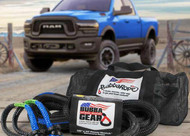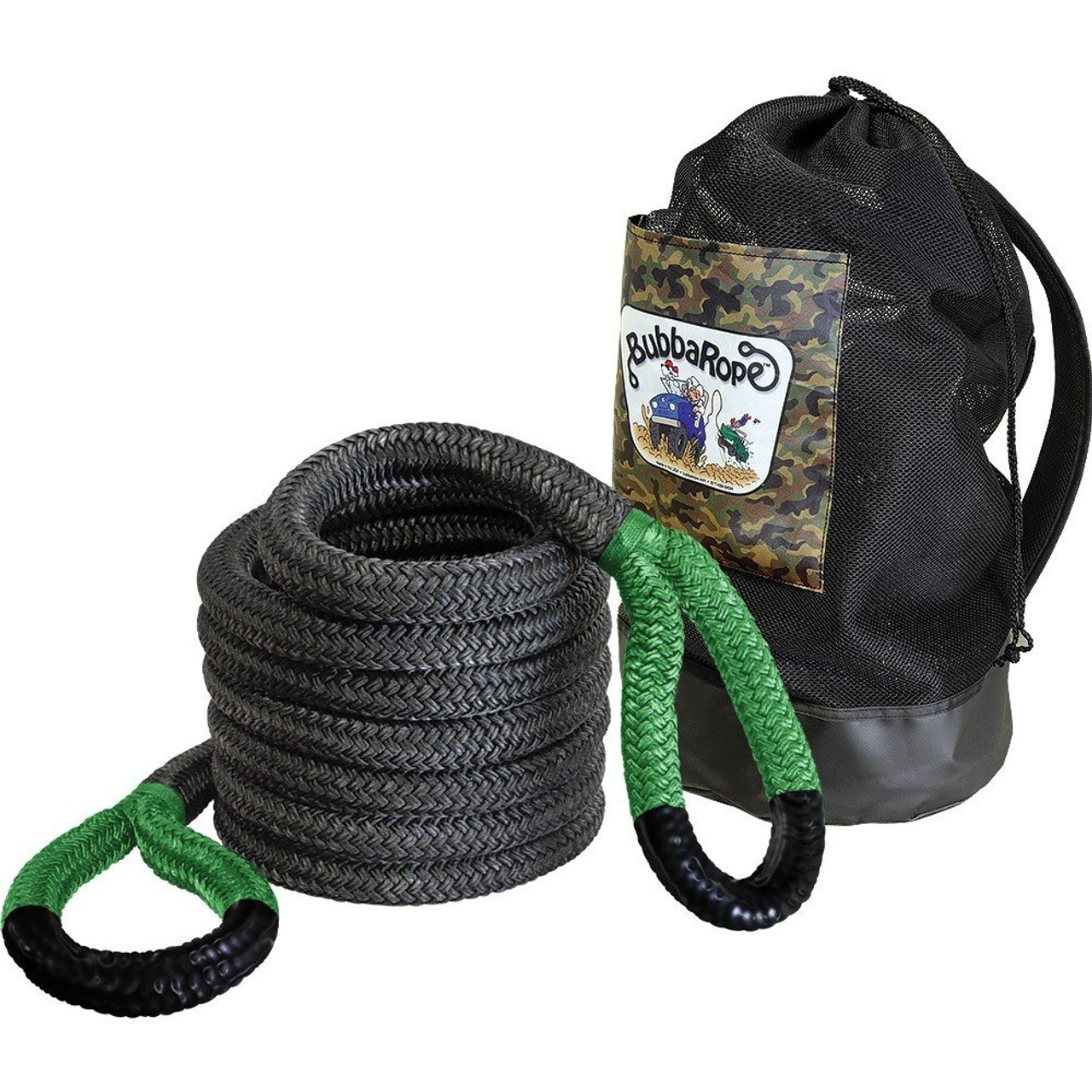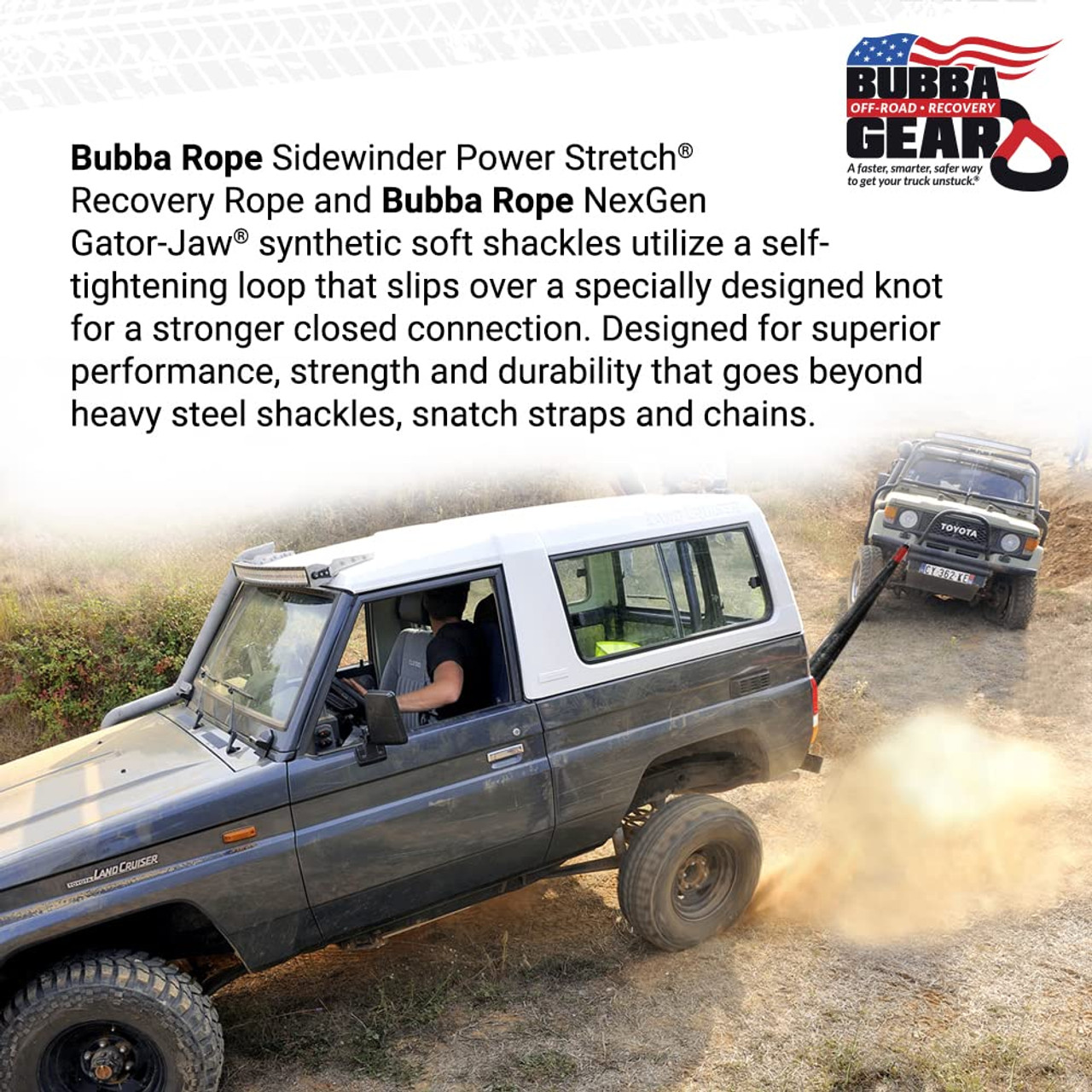What Are Recovery Ropes, and Which One Should You Use?
13th Mar 2024
A vehicle recovery rope is a specialized, durable rope designed to tow and extract vehicles from difficult situations, such as mud, sand, or snow. Depending on the type, these ropes are built to withstand high tension and dynamic forces, offering elasticity or a static pull. These ropes are essential tools for off-road adventures and emergencies.
In this blog, we'll discuss the types and uses of recovery ropes and how to choose the right one for your needs. Let's dive into the details!
What are the Types of Recovery Ropes?
Recovery ropes are broadly categorized into two main types:
- Kinetic
- Static
These types offer distinct advantages depending on the situation. Understanding these differences is essential when selecting the right rope for your recovery needs.
Kinetic ropes, designed for vehicle recovery, stretch under load, creating a 'snap' effect to help free stuck vehicles. This elasticity reduces the shock on both cars, making recovery smoother and safer.
In contrast, static ropes do not stretch. They provide a steady and controlled pull, ideal for situations where precision is key. This lack of elasticity makes them suitable for winching and direct towing applications.
BUBBA ROPE offers a diverse range of kinetic and static ropes, ensuring top-notch quality and durability. Their ropes cater to various recovery scenarios, demonstrating a commitment to versatility and the needs of off-road enthusiasts.
How to Choose the Right Recovery Rope?
Selecting the suitable recovery rope involves more than just grabbing the first one you see. It's about matching the rope to your vehicle, environment, and the challenges you might face. Let's break down the key factors to consider, ensuring your choice enhances safety and effectiveness during recovery operations.
- Assess Your Recovery Scenarios
Consider the most common environments you expect to encounter. Kinetic ropes excel in muddy or sandy conditions where a dynamic pull can free a stuck vehicle. Static ropes offer reliability and control for more predictable situations, such as on solid ground or snow. - Understand Your Vehicle's Weight
Match the rope's rated capacity to your vehicle's weight. Using a rope with a higher breaking strength ensures safety and durability. Kinetic ropes should have a breaking strength of 2 to 3 times that of the vehicle's weight, whereas static ropes can be closer to the vehicle’s actual weight. - Consider Rope Material and Construction
Seek ropes made from synthetic fibers, such as nylon or polyester, known for their strength, durability, and resistance to the elements. The rope's construction, including its braiding and coating, affects its flexibility, ease of handling, and longevity. - Choose Versatility for Various Conditions
Opting for a brand like BUBBA ROPE, known for its wide range of kinetic and static ropes, is advisable. Their versatility ensures you're prepared for any recovery, backed by quality and durability that off-road enthusiasts trust.
How to Use Recovery Ropes Safely and Effectively?
Whenever using recovery ropes, ensure that both vehicles are securely linked to the rope through rated shackles or hooks. Double-check these connections to avoid accidents. Keep a safe distance from the rope when it's in use since a breaking rope can recoil dangerously.
With kinetic ropes, begin with some slack, then smoothly accelerate to fully utilize the stretch. With static ropes, apply a consistent pull without sudden tugs. Always inspect your rope for damage before and after use to ensure it stays dependable for your next recovery task.
Shop Quality Bubba Ropes With JB Tools
JB Tools offers an extensive selection of BUBBA ROPE products, including top-quality off-road recovery ropes. These ropes are engineered for durability and performance, whether you're pulling through mud, sand, or snow.
BUBBA ROPE's range includes kinetic and static options designed to handle the demands of any recovery scenario. With JB Tools, you can purchase these Bubba ropes at an amazing discounted price.






